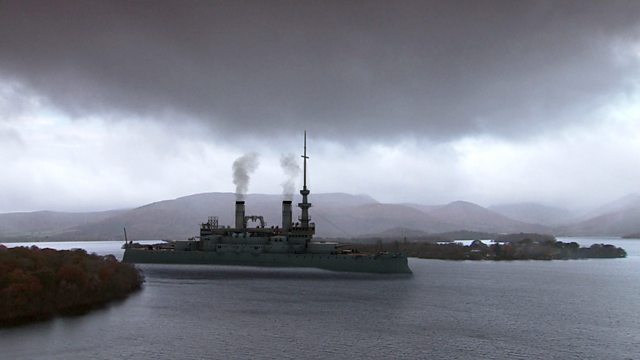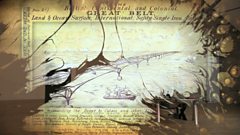
Making Connections
Olivia Horsfall Turner looks at two of the most radical civil engineering projects proposed in the last century - a ship canal in Scotland and the Channel Tunnel.
Using her skills to uncover long-forgotten and abandoned plans, architectural investigator Dr Olivia Horsfall Turner explores the fascinating and dramatic stories behind some of the grandest designs that were never built. In this episode she looks at two of the most radical civil engineering projects proposed in the last century and explores how international politics and vested interests both drove, and derailed, plans to better connect Britain to the continent.
In the early 1900s Britain was anticipating the threat of war. As concern grew about Germany expanding its naval fleet and investing in its infrastructure, there were calls to find a way for Britain's navy to be able to react swiftly to protect our waters. The solution proposed was to create a ship canal big enough for warships to cross from the Firth of Clyde on the west of Scotland to the Firth of Forth on the east. This enormous civil engineering endeavour would have completely changed the central belt of Scotland - the favoured route was through Loch Lomond, now considered one of the most treasured wilderness areas in the country.
There was huge support for the building of the canal, not least from members of parliament who recognised the potential for creating jobs and wealth in their constituencies. The debate over whether to invest 脗拢50m of the public purse in building the canal dragged on for years in both the House of Commons and Lords, with opinion split on whether it really was a strategic imperative. In the end, technology decided the fate of the canal. By 1918, all of the naval fleet was fuelled by oil rather than coal and so instead of a canal an oil pipeline was built from the mouth of the Clyde to Grangemouth on the east, and Royal Navy destroyers never did - and never will - sail up Loch Lomond.
Fifty years later, instead of seeking to protect Britain from attacks from the continent, thoughts had turned to how to connect our island to the rest of Europe. There had been talk of building a channel tunnel between England and France for centuries. In contrast with the Mid-Scotland Canal, where strategic advantages stimulated building, it was national security concerns that cut short the first proposal for a Channel Tunnel. The idea was presented to the British by Napoleon in 1802, but was rejected over concerns that the French had covert plans to invade England.
But 170 years later, the idea was to become a reality. Britain had finally joined mainland Europe through her membership of the Common Market in 1973, and both the French and British governments agreed it made sense build a tunnel together. But in 1975, construction was again abandoned because the British prime minister, Harold Wilson, had to look for economies in a financial crisis caused by dramatically rising world oil prices. Once more, the bid to connect with the continent had failed.
The idea was resurrected yet again in the early 1980s, with several competing schemes for consideration. The boldest of these, sponsored by British Steel, was a vast structure combing a double-decker bridge and tunnel, linked to an artificial island in the middle of the English Channel. The materials for the construction of this vast project would keep the steel mills of England and Scotland busy for a decade - but the politicians chose in favour of the Eurotunnel bid and British industry lost out.
Both these grandiose schemes defined how Britain saw its relationship with Europe. In an age when the headline 'Fog in Channel - Europe Isolated' made sense, a naval ship canal that would protect our island fortress from continental rivals was considered to be in the national interest. But just 60 years later, the fog had lifted and securing Britain's national interests became dependent on a physical connection with countries previously regarded as hostile. However, both plans foundered on the conflict of politics and vested interest.
Last on
Clip
-
![]()
Great engineering plans
Duration: 01:00
Music Played
-
![]()
Nils Frahm
More
Credits
| Role | Contributor |
|---|---|
| Presenter | Olivia Horsfall Turner |
| Series Producer | Paul Murton |
| Director | Paul Murton |
Broadcasts
- Mon 19 Aug 2013 21:00
- Tue 20 Aug 2013 02:30
- Wed 21 Aug 2013 22:00
- Sun 3 Nov 2013 20:00
- Fri 21 Feb 2014 01:05
- Wed 27 Aug 2014 23:00
- Thu 17 Mar 2016 01:30
- Wed 17 May 2017 20:00
- Fri 19 May 2017 02:45
- Tue 27 Feb 2018 23:00
Post-War Architecture Collection
A collection of programmes examining the triumphs and failures of post-war architecture.


